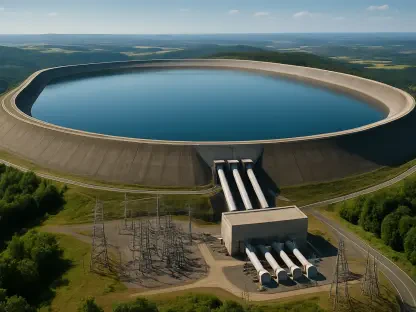Severe weather events have become increasingly frequent and destructive, posing significant challenges for utility companies tasked with maintaining grid resilience and minimizing the financial burdens on ratepayers. In this evolving landscape, artificial intelligence (AI) stands as a transformative force in modernizing storm response strategies. Adoption of AI-driven technologies promises enhanced data processing capabilities, enabling utilities to effectively preempt and manage disruptions. This guide delves into the best practices for integrating AI in storm response, amplifying operational efficacy, safety, and cost-effectiveness.
Best Practice Adoption and Significance
Implementing best practices when integrating AI into utility operations is pivotal to maximizing technological benefits. AI provides utilities with tools to bolster grid resilience, reduce operational costs, and improve the reliability of power services. Employing AI transforms utility workflows by enhancing data processing speed and accuracy, allowing for real-time decisions that significantly mitigate storm-related impacts. Safety is also augmented as AI streamlines processes that typically expose personnel to hazardous conditions, creating efficiencies that reduce the strain on human resources during crises.
Guidelines for AI-Driven Storm Response Deployment
Predictive Analysis for Effective Resource Allocation
AI’s predictive analysis capabilities prove crucial in addressing storm preparedness by identifying impact zones and allocating necessary resources effectively. Utilizing sophisticated models, AI generates insights from historical weather data and real-time analytics. This empowers utilities to optimize their response strategies, ensuring personnel are well-equipped and positioned strategically prior to severe weather onset. During a notable instance with Hurricane X, AI-driven resource distribution led to expedited recovery and minimized disruptions, highlighting the technology’s efficacy in crisis management.
AI-Powered Asset Inspection and Management
Incorporating AI into asset inspection and vegetation management unlocks significant improvements in system reliability. Through machine learning algorithms, AI can analyze vast datasets to pinpoint vulnerabilities in infrastructure and foliage growth threatening power lines. This enables preemptive actions that not only boost service reliability metrics such as SAIDI but also cut down on maintenance costs and response times. Enhanced inspection processes using AI have notably contributed to improved operational conditions across several utilities, showcasing the practicality of such integrations.
Automated Tracking for Evaluating Cost and Time
Precision in tracking expenses and managing time during storm response activities is essential for effective cost recovery. AI provides automated solutions that streamline financial reporting, ensuring compliance and accuracy. These systems significantly reduce manual errors and enhance transparency, making cost recovery from regulators less arduous. Real-life scenarios demonstrated success in using AI tools for smoothly navigating financial documentation, stabilizing cash flows, and minimizing unnecessary expenditures, benefiting both utilities and ratepayers alike.
Recommendations for Implementing AI Solutions
Successfully integrating AI in storm response requires adapting existing processes to align with AI capabilities while preserving valuable human oversight. Utility sectors that stand to gain include grid operations, asset management, and financial departments. Evaluating current methodologies and identifying specific gaps where AI can add substantial value is crucial. Companies should assess their readiness for AI adoption, develop guidelines for training personnel, and balance automation with human judgment to capitalize on AI’s strengths in enhancing storm response strategies.
Transitioning to AI-enhanced storm response presents a great opportunity for utilities to tackle severe weather challenges with resilience and efficiency. By adopting forward-thinking practices, utilities can not only safeguard infrastructure but also deliver improved service reliability, ensuring stability for both customers and service providers. This dynamic integration of AI positions utilities to make informed investments, leading to robust systems capable of withstanding climatic adversities, leaving stakeholders better prepared for future storms.









